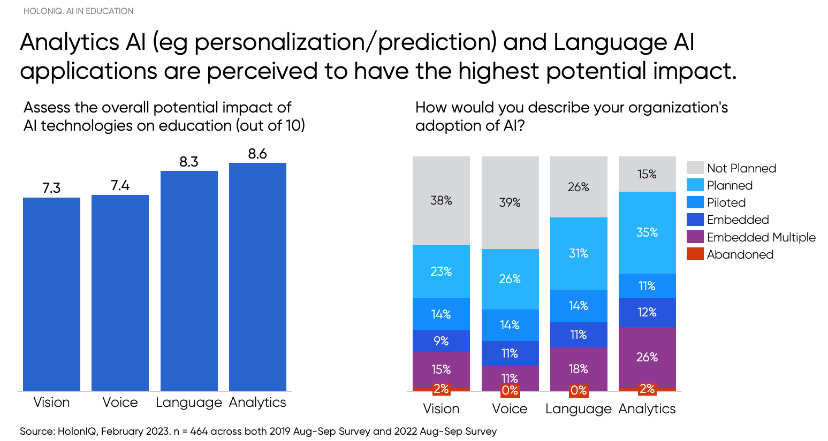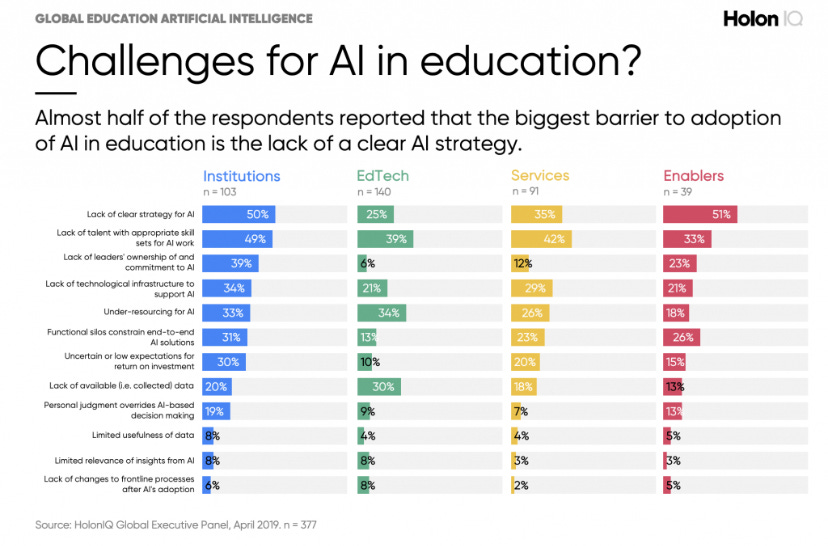Essay: Exploring the impact of Geert Hofstede's Cultural Dimensions Theory on the adoption of artificial intelligence (AI) in education.
Some countries have embraced AI in education with enthusiasm, leveraging its potential to enhance learning experiences, personalise education, and improve administrative processes. But not the UK …
Executive Summary
Image credit: Nadio Granata (Dalle:E)
This essay explores the impact of Geert Hofstede's Cultural Dimensions (1980) on the adoption of artificial intelligence (AI) in education, focusing on the varying speeds of AI adoption across different countries and specifically addressing the relatively slower pace of adoption in the UK and similar countries.
Key findings reveal that cultural dimensions such as Power Distance, Uncertainty Avoidance, Individualism vs. Collectivism, and Long-term vs. Short-term Orientation play a significant role in influencing the adoption of AI in education. These dimensions impact the attitudes towards technological innovation, risk aversion, individual versus group decision-making, and long-term planning, thus contributing to the differences in AI adoption rates among countries.
My essay emphasises that the UK and similar countries exhibit higher levels of uncertainty avoidance and are more inclined towards long-term orientation, which results in a cautious approach towards embracing AI in education. These cultural tendencies lead to slower decision-making processes and a preference for proven traditional methods over emerging technological solutions.
Overall, the analysis underscores the importance of understanding cultural dimensions in shaping attitudes towards AI adoption in education and advocates for tailored strategies that account for variances in cultural values and practices across different nations.
But … we need to hurry up!
Introduction
In today's interconnected and rapidly evolving global landscape, the cross-cultural impact on the adoption of artificial intelligence (AI) in education has become a topic of significant importance. Geert Hofstede's Cultural Dimensions theory provides a valuable framework for understanding the complexities of different cultural values and their influence on various aspects of society, including the integration of AI in educational settings.
Hofstede's dimensions, which include Power Distance, Uncertainty Avoidance, Individualism vs. Collectivism, and Long-term vs. Short-term Orientation, offer insightful perspectives on how cultural variations can shape attitudes, behaviors, and decision-making processes. By delving into these dimensions, we can gain a deeper understanding of why certain countries may exhibit varying degrees of receptiveness to AI adoption in education, and how this could impact the overall learning experiences of students.
In this context, it is essential to explore the implications of cultural dimensions on the implementation of AI in education, particularly focusing on the differences in adoption rates between countries like the UK and others. By examining how cultural dimensions intersect with technological advancements in education, we can uncover valuable insights into the challenges and opportunities that arise when integrating AI into diverse cultural and educational contexts. This exploration will be instrumental in informing educators and stakeholders on how to navigate these cultural considerations and leverage AI in ways that are sensitive and responsive to the diverse cultural landscapes in which they operate.
Understanding Hofstede's Cultural Dimensions
Geert Hofstede's Cultural Dimensions Theory (1980) provides a framework for understanding how values in the workplace are influenced by culture. The theory identifies several dimensions, including Power Distance, Uncertainty Avoidance, Individualism vs. Collectivism, and Long-term vs. Short-term Orientation. Each dimension plays a crucial role in shaping societal norms and behaviors, affecting various aspects of society, including education and technology adoption.
Power Distance
Power Distance refers to the extent to which less powerful members of institutions and organisations accept and expect that power is distributed unequally. In societies with high Power Distance, there is a strong emphasis on hierarchy and centralised decision-making, whereas in societies with low Power Distance, individuals strive for egalitarianism and inclusiveness.
In the context of education, the Power Distance dimension can significantly influence the dynamics between students and educators. High Power Distance cultures may exhibit a more authoritarian approach to teaching, with limited opportunities for open dialogue and student participation. On the other hand, low Power Distance cultures may prioritise collaborative and participative learning environments, where students are encouraged to voice their opinions and engage in critical thinking.
Uncertainty Avoidance
Uncertainty Avoidance reflects the extent to which members of a society are comfortable with uncertainty and ambiguity. Cultures with high Uncertainty Avoidance tend to have strict rules and rituals, along with a low tolerance for unorthodox ideas or behaviors. In contrast, cultures with low Uncertainty Avoidance are more open to change, innovation, and risk-taking.
When applied to the adoption of technology, particularly in education, the Uncertainty Avoidance dimension can shed light on the willingness of a society to embrace new educational tools such as AI. High Uncertainty Avoidance cultures may demonstrate resistance to integrating AI in education due to concerns about potential disruptions and the unfamiliarity of such advancements. Conversely, low Uncertainty Avoidance cultures may display greater readiness to experiment with AI-driven educational approaches, viewing them as opportunities for enhancing learning experiences.
Individualism vs. Collectivism
Individualism vs. Collectivism elucidates the emphasis placed on individual goals and achievements versus the collective well-being within a society. Individualistic cultures prioritise personal autonomy, self-expression, and individual achievements, whereas collectivistic cultures emphasise group harmony, interdependence, and consensus-building.
In the realm of education, these cultural orientations can shape the approach to learning and collaboration. Individualistic societies may foster competitive and independent learning environments, where students are encouraged to pursue personal academic excellence. In contrast, collectivistic societies may promote cooperative and communal learning settings, emphasising the importance of teamwork and mutual support among students.
Long-term vs. Short-term Orientation
Long-term vs. Short-term Orientation reflects a society's time horizon in relation to planning, achieving goals, and adapting to change. Cultures with a long-term orientation prioritise perseverance, thrift, and adapting traditions to modern contexts, whereas those with a short-term orientation focus on immediate gratification, respect for tradition, and fulfilling social obligations.
In the context of technology adoption in education, the Long-term vs. Short-term Orientation dimension can influence the willingness to invest in long-term educational strategies, including the integration of AI. Cultures with a long-term orientation may favour AI adoption as a means of preparing students for future challenges and opportunities, while short-term oriented cultures may approach AI adoption with more caution, preferring established educational methods over immediate technological advancements.
Summary
In summary, understanding Hofstede's Cultural Dimensions is essential for comprehending the diverse influences of cultural values on educational practices and the adoption of technology, such as AI, in education. By recognising the impact of Power Distance, Uncertainty Avoidance, Individualism vs. Collectivism, and Long-term vs. Short-term Orientation, educators and policymakers can navigate cultural differences and tailor educational strategies to effectively integrate innovative technologies into diverse cultural contexts.
In the context of the UK and similar nations, the interplay of these cultural dimensions significantly shapes the landscape of AI adoption in education. Understanding these dimensions can provide educators and policymakers with insights into the underlying cultural factors that contribute to the divergence in the speed and approach to integrating AI technologies in educational settings. By acknowledging and addressing these cultural nuances, stakeholders can better tailor AI initiatives to align with the cultural context, ensuring more effective and culturally sensitive implementation strategies for the advancement of education through AI.
Nadio Granata FCIM, FHEA, PGCE is the founder of the AI Collective and co-founder of The Age of Human Think Tank. He is a published author, Visiting Lecturer at Roehampton University, author of the CIM Level 6 Specialist Award in AI Marketing for the Cambridge Professional Academy and self-titled evangelist for the democratisation of AI.
www.nadio.ai
References available upon request





